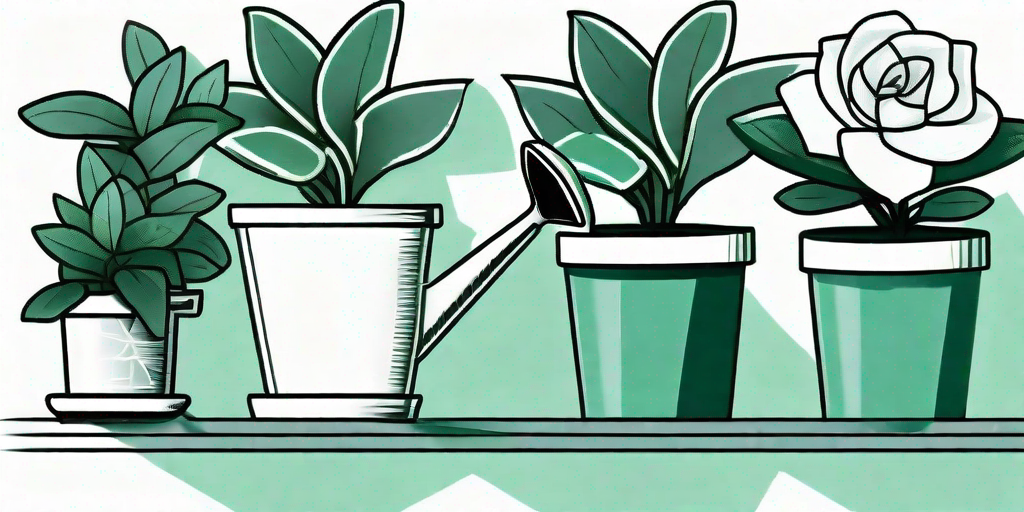
Ah, gardenias! Those fragrant, white blossoms that can turn any garden into a paradise. But, as any seasoned gardener will tell you, these beauties can be a bit finicky, especially when it comes to transplanting. Fear not, dear reader, because we're about to spill the beans (or should we say, the seeds?) on how to successfully transplant gardenias.
Understanding Your Gardenia
Before we dive into the nitty-gritty of transplanting, let's take a moment to understand our green friends. Gardenias, also known as Cape Jasmine, are native to tropical and subtropical regions. They're a bit like the divas of the plant world, demanding just the right amount of light, water, and attention. But, with the right care, they'll reward you with their stunning blooms and intoxicating fragrance.
Now, you might be wondering why gardenias need to be transplanted in the first place. Well, like all plants, gardenias can outgrow their pots or planting spaces. They might also need to be moved to a sunnier or shadier spot, depending on their needs. So, whether you're a seasoned gardener or a green-thumbed newbie, mastering the art of transplanting is a must.
When to Transplant Gardenias
Timing is everything, especially when it comes to transplanting gardenias. These plants prefer to be moved in early spring or fall, when temperatures are mild. Transplanting in extreme heat or cold can stress the plant, leading to drooping leaves or even plant death. And trust us, no one wants to be the cause of a plant funeral.
It's also a good idea to transplant gardenias on a cloudy day or in the early morning or late evening. This can help prevent the plant from drying out during the transplanting process. Remember, gardenias are divas, and they don't like to be uncomfortable.
How to Transplant Gardenias
Now that we've covered the basics, let's get down to business. Here's a step-by-step guide on how to transplant gardenias:
- Prepare the new location: Before you start digging up your gardenia, make sure its new home is ready. The soil should be well-draining and rich in organic matter. You can add compost or peat moss to improve the soil quality. The location should also get plenty of indirect sunlight.
- Water the plant: A day before you plan to transplant, water the gardenia thoroughly. This will make it easier to remove the plant from its current location and reduce transplant shock.
- Remove the gardenia: Using a sharp, clean shovel, dig around the base of the gardenia, taking care not to damage the roots. Lift the plant out of the ground gently.
- Plant the gardenia: Place the gardenia in its new location, making sure the top of the root ball is level with the soil surface. Backfill with soil and firm it gently around the base of the plant.
- Water and care for the gardenia: After transplanting, water the gardenia thoroughly and apply a layer of mulch around the base to conserve moisture. Monitor the plant closely for the next few weeks and water regularly.
And voila! You've successfully transplanted a gardenia. Give yourself a pat on the back, and maybe a celebratory cup of tea. You've earned it.
Common Mistakes to Avoid
Transplanting gardenias can be a bit tricky, and it's easy to make mistakes. But don't worry, we're here to help you avoid some common pitfalls:
- Transplanting at the wrong time: As we mentioned earlier, timing is crucial. Avoid transplanting in the heat of summer or the cold of winter.
- Not preparing the new location: Gardenias need well-draining, rich soil and plenty of indirect sunlight. Make sure the new location meets these requirements before you start digging.
- Not watering the plant before transplanting: Watering the gardenia a day before transplanting can reduce transplant shock and make the process easier.
- Planting too deep or too shallow: The top of the root ball should be level with the soil surface. Planting too deep can lead to root rot, while planting too shallow can expose the roots.
Remember, everyone makes mistakes, especially when learning something new. So, don't be too hard on yourself if your first few attempts at transplanting aren't perfect. Practice makes perfect, after all.
FAQs
Why are my transplanted gardenias wilting?
Wilting after transplanting is usually a sign of transplant shock. This can be caused by a sudden change in conditions or damage to the roots during transplanting. To reduce transplant shock, water the gardenia thoroughly before and after transplanting, and avoid transplanting in extreme weather conditions.
How long does it take for a gardenia to recover from transplanting?
It can take a few weeks for a gardenia to recover from transplanting. During this time, it's important to water the plant regularly and protect it from extreme weather conditions. If the gardenia continues to wilt or shows signs of disease, consult a local nursery or extension service.
Can I transplant a gardenia in bloom?
While it's possible to transplant a gardenia in bloom, it's not recommended. The stress of transplanting can cause the plant to drop its flowers. It's best to wait until the blooming period is over before transplanting.
Final Thoughts
Transplanting gardenias can be a bit of a challenge, but with a little knowledge and a lot of patience, it's definitely doable. Remember, the key to successful transplanting is understanding your plant's needs and providing the right conditions. So, don your gardening gloves, grab your shovel, and get ready to transform your garden with the sweet scent of gardenias.
And remember, every gardener has a few plant funerals under their belt. It's all part of the learning process. So, don't be discouraged if your first few attempts don't go as planned. Keep trying, keep learning, and most importantly, keep gardening!















